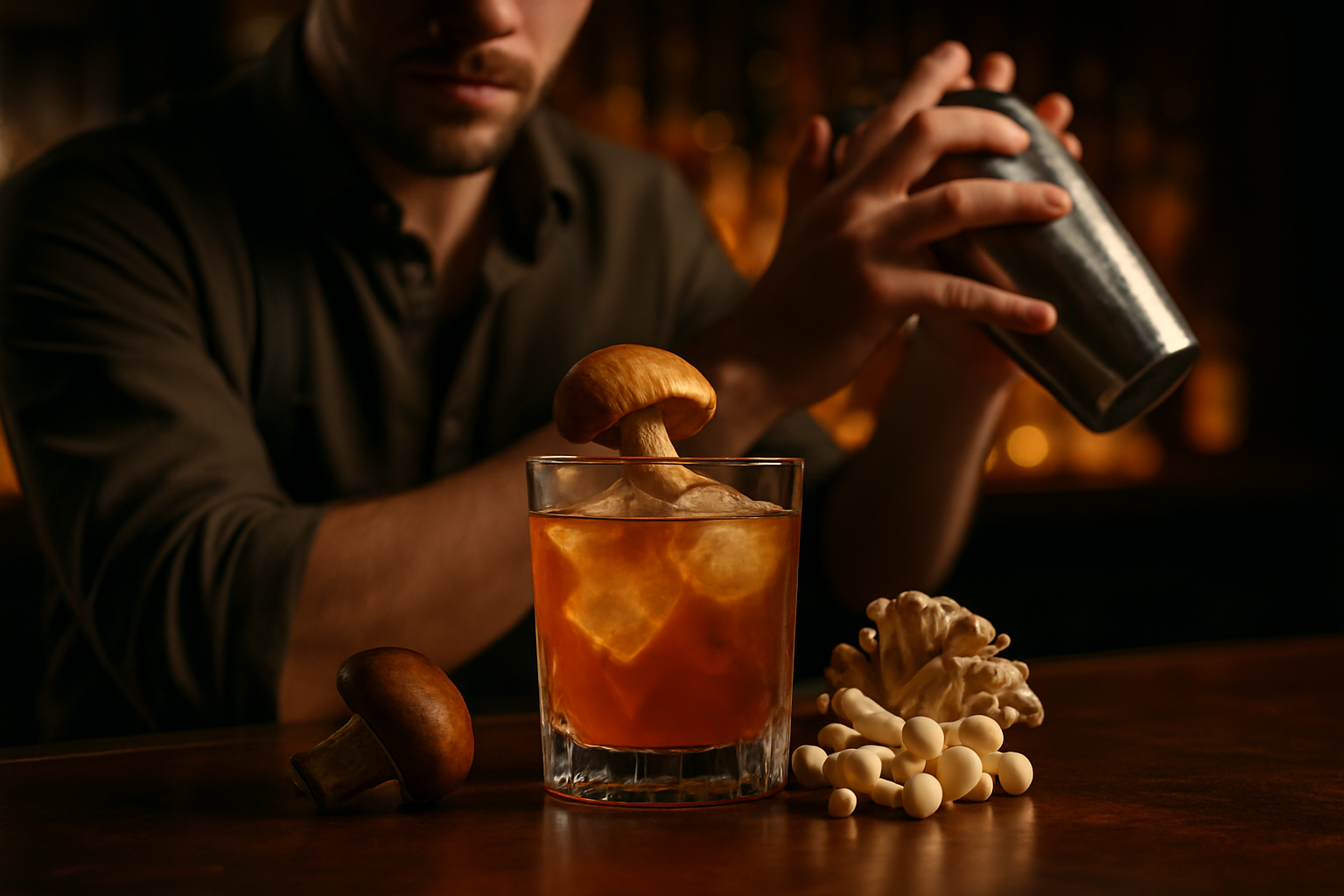Soju Soirée: Elevating Korean Cocktail Culture
Discover the vibrant world of Korean cocktail innovation as soju takes center stage in mixology. This clear spirit, once relegated to traditional drinking rituals, is now shaking up bar scenes worldwide. From fusion concoctions to artisanal infusions, soju's versatility is inspiring bartenders and enthusiasts alike to push the boundaries of cocktail crafting.

The rise of Korean pop culture, including K-dramas and K-pop, has played a significant role in introducing soju to international audiences. As viewers become intrigued by the drinking scenes in their favorite shows, they seek out soju experiences in their own cities. This cultural exchange has paved the way for soju to make its mark in cocktail bars around the world, inspiring mixologists to incorporate Korean flavors and techniques into their creations.
Crafting the Perfect Soju Cocktail
Creating the ideal soju cocktail requires a delicate balance of flavors and an understanding of the spirit’s unique characteristics. Unlike vodka or gin, soju has a softer, slightly sweet profile that can be easily overwhelmed by strong mixers. Successful soju cocktails often feature fresh, light ingredients that complement rather than mask the spirit’s subtle nuances.
Citrus fruits, such as yuzu and Korean citron, pair exceptionally well with soju, adding a bright, zesty note to cocktails. Herbs like shiso and perilla bring an aromatic dimension, while traditional Korean ingredients like gochugaru (red pepper flakes) or omija (five-flavor berry) can add unexpected depth and complexity to drinks. Mixologists are also experimenting with infusing soju with various fruits, herbs, and spices to create custom flavored bases for their cocktails.
Fusion Flavors: East Meets West
The integration of soju into Western cocktail culture has led to exciting fusion creations that blend Korean flavors with familiar cocktail formats. For instance, the “Soju Mojito” has become a popular twist on the classic Cuban drink, substituting soju for rum and incorporating Asian herbs like lemongrass or Thai basil. Similarly, the “Korean Mule” replaces vodka with soju and adds a splash of yuzu juice for a Korean-inspired take on the Moscow Mule.
These fusion cocktails not only introduce soju to new audiences but also challenge bartenders to think creatively about how to incorporate Korean ingredients and flavors into their existing repertoire. The result is a new category of cocktails that bridges cultures and expands the horizons of mixology.
Artisanal Soju and Craft Cocktails
As the popularity of soju cocktails grows, so does the demand for high-quality, artisanal soju. Craft distilleries in Korea and beyond are producing small-batch soju using traditional methods and premium ingredients. These artisanal sojus offer more complex flavor profiles, making them ideal for sipping neat or as the star ingredient in craft cocktails.
Craft soju producers are experimenting with different base ingredients, moving beyond the traditional rice or sweet potato to include unique grains like buckwheat or barley. Some are even aging soju in oak barrels, similar to whiskey production, to create more nuanced spirits that can stand up to bolder cocktail ingredients.
The Future of Soju Mixology
The soju cocktail trend shows no signs of slowing down, with bartenders and home mixologists continually pushing the boundaries of what’s possible with this versatile spirit. As interest in Korean cuisine and culture continues to grow globally, we can expect to see more innovative soju-based drinks appearing on cocktail menus and in home bars.
Upcoming trends in soju mixology include the use of molecular gastronomy techniques to create visually stunning and texturally interesting cocktails. Soju foams, gels, and even soju-based “caviar” are starting to appear in avant-garde bars. Additionally, the low-ABV cocktail movement is embracing soju as a lighter alternative to traditional spirits, allowing for more session-friendly drink options.
Soju Cocktail Tips & Facts
• Soju typically has an alcohol content between 16% and 53%, with most commercial brands around 20%.
• Chill soju before mixing to enhance its smooth texture and subtle flavors.
• Use fresh, high-quality mixers to complement soju’s delicate profile.
• Experiment with Korean fruits like persimmon or Asian pear for unique flavor combinations.
• Try infusing soju with green tea or roasted barley for a Korean twist on flavored spirits.
• Soju cocktails pair well with spicy Korean dishes, creating a balanced dining experience.
• Some popular soju cocktails include the Soju Sunrise, Kimchi Bloody Mary, and Soju Lemon Sour.
As soju continues to capture the imagination of cocktail enthusiasts worldwide, it’s clear that this Korean spirit is no longer just a straight-sipping accompaniment to barbecue. The soju soirée has begun, inviting drinkers to explore a new frontier of flavors and techniques in mixology. Whether you’re a seasoned bartender or a curious home mixer, the world of soju cocktails offers endless possibilities for creativity and cultural exploration. So raise a glass to the future of Korean-inspired mixology – it’s time to join the soju revolution and discover the exciting potential of this versatile spirit in the global cocktail scene.




